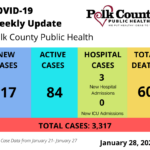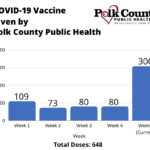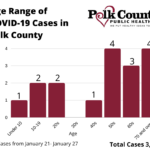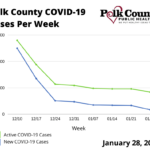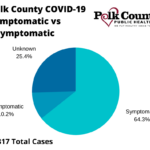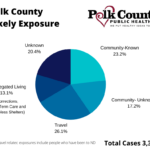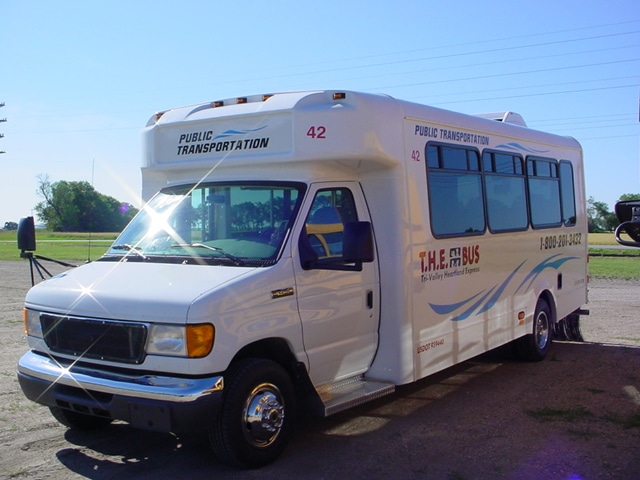The Minnesota Department of Health released its COVID-19 Weekly Report (here) on Thursday. All information is updated through 4 p.m. on Wednesday, January 27 unless noted. Information on Polk County and the KROX listening area was pulled from the report and is below –
COVID-19 Vaccine Questions and Answers with Polk County Public Health
Keeping up with the rapidly changing information is hard. Public Health is here to provide you accurate, up-to-date information regarding our most asked questions related to the COVID-19 vaccine.
Why is getting vaccinated important?
Getting vaccinated against COVID-19 will be one of the best ways to protect yourself and the people around you. The more people vaccinated means there will be less disease in our communities and by stopping the spread of COVID-19, we can keep businesses, schools, and other venues open. Stopping the spread of COVID-19 gets us closer to the end of the pandemic.
Is the COVID-19 vaccine safe; wasn’t it rapidly developed and tested?
The first COVID-19 vaccines have come out within a year of the COVID-19 virus being discovered and there are many questions about how a vaccine could be created so quickly. Many pharmaceutical companies invested significant resources into quickly developing a vaccine as an emergency response, yet that does not mean that companies bypassed safety protocols. It is important to know that steps to check for safety were not skipped. With help from the federal government, the process was able to happen quicker and more efficiently.
The manufacturers are required to present the study data showing the vaccine is safe and that it works before it is approved for general populations. This data is closely reviewed by several scientific groups at the Food and Drug Administration (FDA) and the Centers for Disease Control and Prevention (CDC). The CDC Advisory Committee on Immunization Practices (ACIP) and other groups look at available information about a vaccine and make informed decisions on the risks and benefits of using it.
Who can get the COVID-19 vaccine and how many doses?
Currently, there are two COVID-19 vaccines approved for emergency use authorization by the FDA, Pfizer, and Moderna. Both vaccines require 2 doses. The Pfizer vaccine allows vaccination of people 16 years and older, doses are given 3 weeks apart, and the Moderna vaccine allows vaccination for people 18 years and older, doses given 4 weeks apart. It is very important for the individual to receive both vaccine doses, the same product for each dose, and the doses are administered during the appropriate time frame.
What are the side effects of the COVID-19 vaccine?
There are short-term mild or moderate vaccine reactions that are common when receiving vaccines and should go away within one to two days. The most reported symptoms with the COVID-19 vaccine have included, but not limited to, short-lived injection pain and systemic reactions including headache, chills, fatigue or muscle pain, or fever. It is important to remember that these side effects are indicators that your immune system is responding to the vaccine.
When can I get vaccinated?
At this time, the COVID-19 vaccine availability is very limited. With the vaccine doses we are allotted our Public Health agencies and our community partners continue to work through the phased priority groups, outlined by the Minnesota Department of Health. Local Public Health and our local healthcare partners will notify our communities as additional people are able to get the vaccine. As more vaccine becomes available, everyone will have the opportunity to receive it.
I already had COVID-19 and recovered; do I need to get a COVID-19 vaccine when it is available?
It is recommended you get the COVID-19 vaccine, even if you’ve had COVID-19 previously. Due to the severe health risks associated with COVID-19 and the fact that reinfection with COVID-19 is possible, you should be vaccinated regardless of whether you already had the COVID-19 infection. People should not get vaccinated if they have COVID-19 symptoms or if they are in quarantine after having close contact with someone who has COVID-19.
Until the COVID-19 vaccine is more widely available, please continue to do your part by slowing the spread of COVID-19. If you haven’t already, get your flu shot, be patient as priority groups are vaccinated, and continue to practice preventative habits such as wearing a mask, staying 6 feet from others, washing your hands often, and staying home if sick.
For more COVID Vaccine data, visit: https://mn.gov/covid19/vaccine/data/index.jsp (click on Polk County to see county-specific data)
| Polk County | Minnesota | |
| Tests | 28,478 | 6,467,868 |
| Positive Cases | 3,317 | 458,633 |
| Percent Positive Reported Tests | 11.7% | 7.1% |
| State Percent Positive Tests** | 6.3% | 7.3% |
| Case Rate per 10,000 | 1,050 | 830 |
| Deaths | 60 | 6,140 |
| No longer require isolation | 3,233 | 442,600 |
| Open Cases | 24 | 9,893 |
**Positive number of tests and positivity calculations include only tests reported by labs that report both positive and negative results. Percent positive is the percent of positive tests from the total number of tests by county of residence.
| Zip Code | City | Population | Cases | Case Rate per 10,000 | New Cases since 1/20 |
| 56517 | Beltrami | 279 | 15 | 538 | 0 |
| 56523 | Climax | 539 | 52 | 965 | 0 |
| 56535 | Erskine | 1,363 | 100 | 734 | 0 |
| 56540 | Fertile | 1,962 | 187 | 953 | 1 |
| 56542 | Fosston | 2,829 | 212 | 749 | 2 |
| 56556 | McIntosh | 1,160 | 118 | 1017 | 1 |
| 56568 | Nielsville | 142 | 5 or less | NA | NA |
| 56592 | Winger | 516 | 36 | 698 | 0 |
| 56646 | Gully | 355 | 24 | 676 | 0 |
| 56684 | Trail | 282 | 33 | 1,170 | 3 |
| 56716 | Crookston | 9,416 | 989 | 1,050 | 4 |
| 56721 | East Grand Forks | 10,096 | 1,262 | 1,250 | 5 |
| 56722 | Euclid | 386 | 52 | 1,347 | 0 |
| 56723 | Fisher | 970 | 114 | 1,175 | 0 |
| 56736 | Mentor | 903 | 72 | 797 | 2 |
| 56750 | Red Lake Falls | 2,539 | 217 | 855 | 1 |
| 56713 | Argyle | 1,022 | 91 | 890 | 0 |
| 56757 | Stephen | 932 | 68 | 730 | 0 |
| 56762 | Warren | 2,494 | 232 | 930 | 1 |
SCHOOL LEARNING MODEL OPTIONS
| Policy Option | 14-day Case Rate per 10,000 |
| All in-person | 0 to less than 10 |
| Elementary in-person/high school hybrid | 10 to less than 20 |
| Both hybrid | 20 to less than 30 |
| Elementary hybrid/high school distance | 30 to less than 50 |
| All Distance | 50 or more |
CASE RATE PER COUNTY
| thru 1/16 | 14-day Case Rate per 10,000 | Increase or (-) Decrease |
| Marshall | 20.23 | -6.39 |
| Norman | 13.72 | -7.62 |
| Polk | 20.58 | -2.53 |
| Red Lake | 12.48 | -4.99 |


